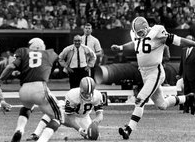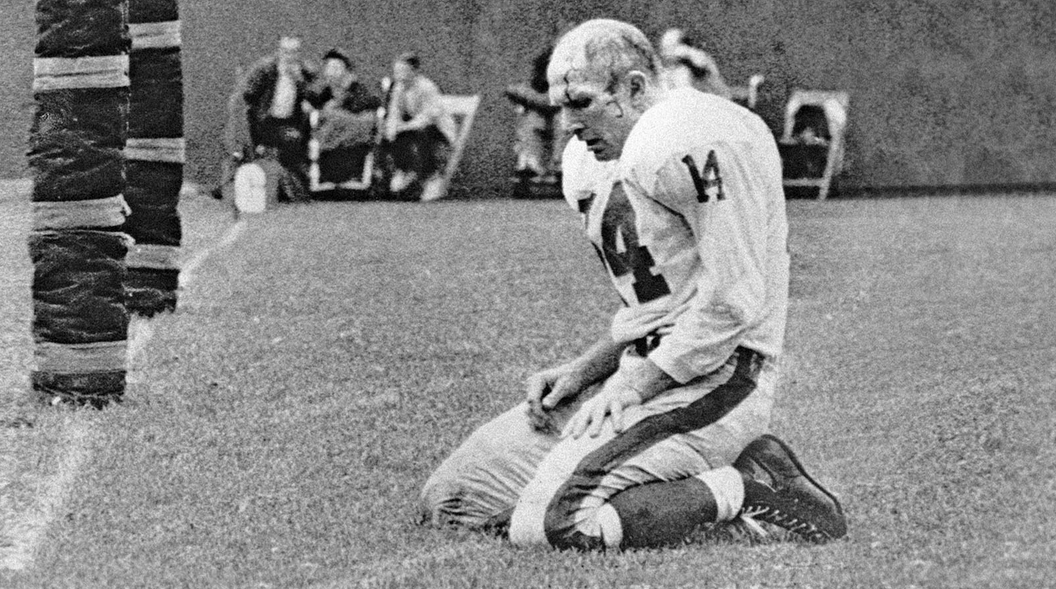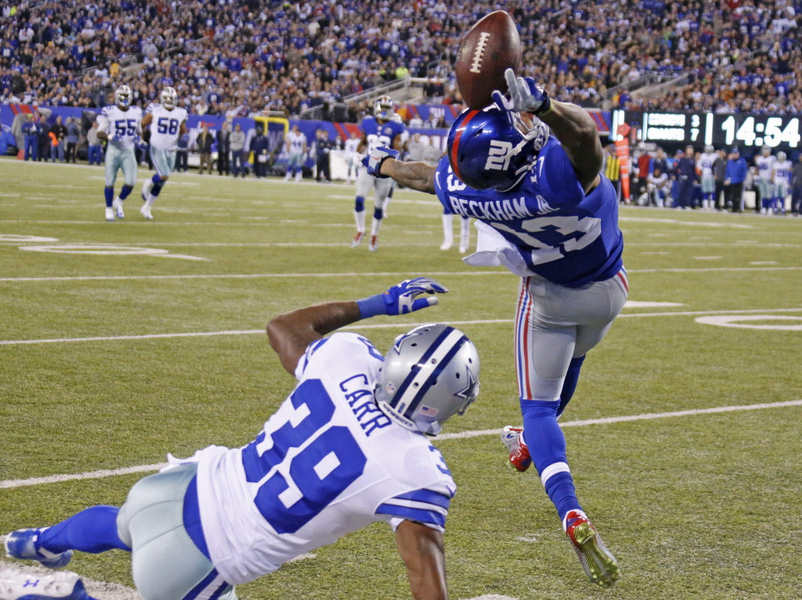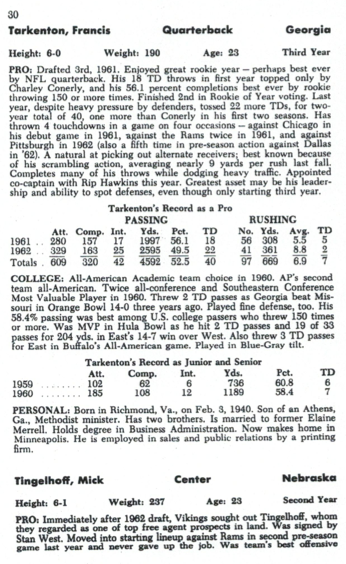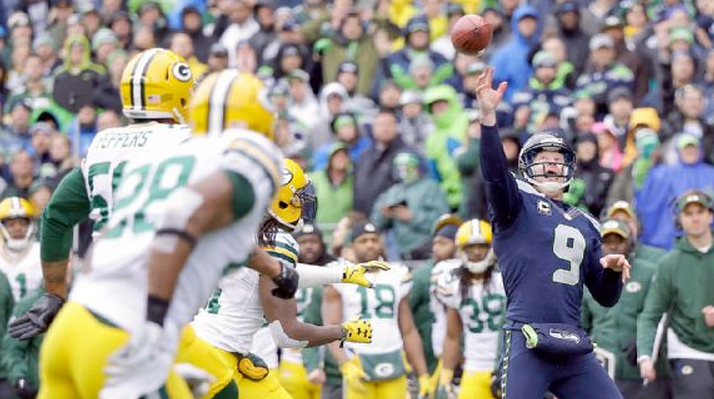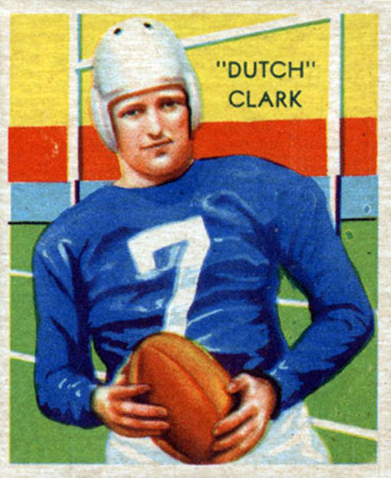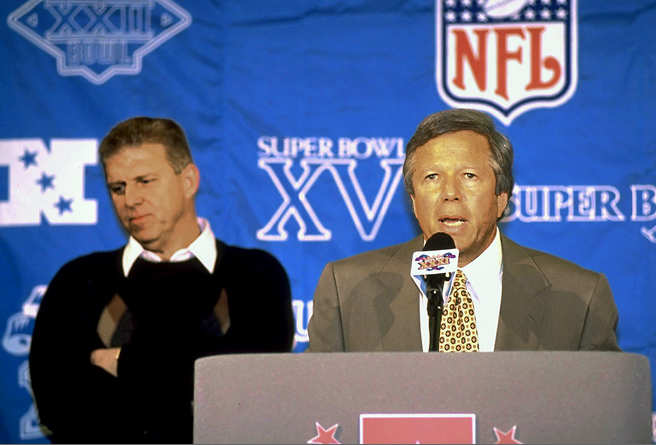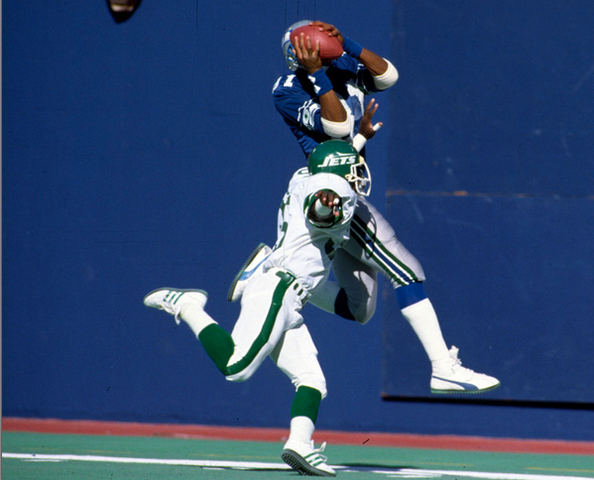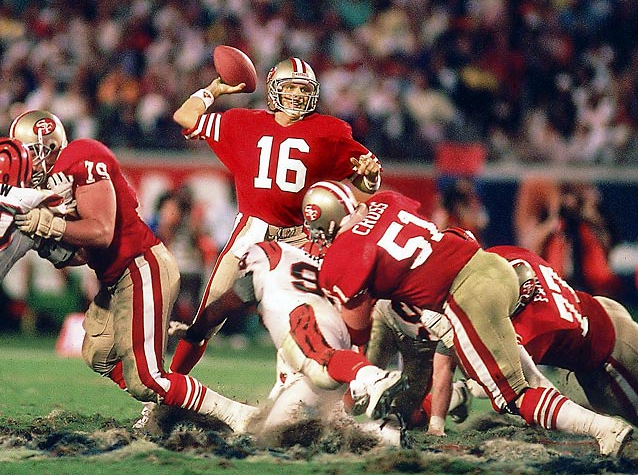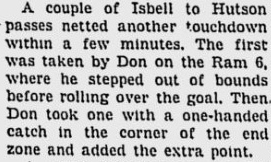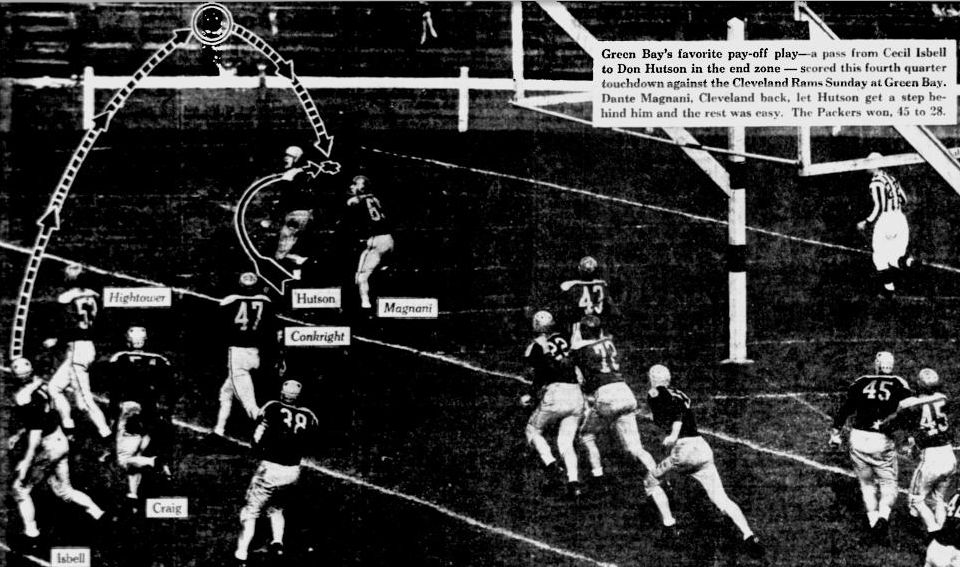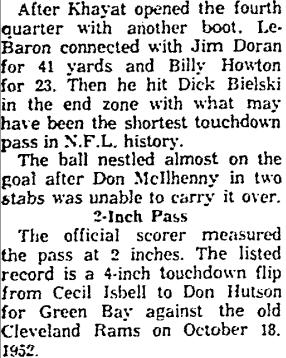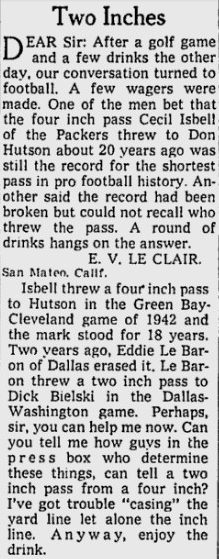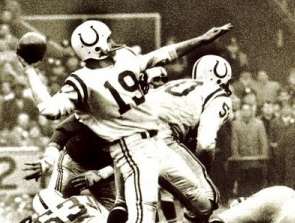When you think of Lou Groza, you think of this big guy — 6-3, 240, with a bit of a belly — booting field goals forever for the Browns. Groza happened to be a fine offensive tackle, too, protecting the blind side of Cleveland quarterbacks for more than a decade, but it’s his 264 field goals and 1,608 points that are more remembered. When he retired after the 1967 season, he held the career record in both categories. By a mile.
Anyway, you might be amused to learn that “The Toe,” as he was called, once held an NFL passing record. What record could that possibly be, you ask? Answer: For almost five years, he was the oldest player ever to throw a pass in the league.
Groza made this little piece of history in a 27-17 loss to the Vikings in 1965 – at the age of 41 years, 279 days. Patricia Heaton’s dad, Chuck, who covered the Browns for The Plain Dealer, described it this way:
The large and somewhat stunned gathering also saw Lou Groza throw a forward pass. The Toe, who on very few occasions in the past has had to resort to such desperation maneuvers, was trying to kick a 50-yard field goal.
The pass from center bounced away from Bobby Franklin, the holder. Lou recovered and, being confronted with nothing but purple [Vikings] jerseys, tried a pass. It was intended for John Brewer but wasn’t completed. So Minnesota took over.
The next season, in a similar situation, Groza threw another pass. This one was actually completed . . . for a 7-yard loss to one of his blockers, linebacker Vince Costello. Lou was now 42 years, 256 days old. This would stand as the record until 1975, when the George Blanda – a spry 43 years, 38 days – came off the bench to quarterback the Raiders to a 31-14 win over the Steelers. (He even tossed three touchdown passes, all of them longer than minus-7 yards.)
Blanda was still chucking in 1975, his final year in the NFL. In fact, in his last regular-season game, he went 1 for 3 for 11 yards (with one interception) as Oakland beat the Chiefs, 28-20. He’s still the Oldest Guy To Throw A Pass by more than three years.
In the decades since, only four other players older than Groza have cocked their arm and let one fly. Here’s that list:
THE SIX OLDEST PLAYERS TO THROW A PASS IN THE NFL
| Year Player, Team | Vs | Att | Comp | Yds | TD | Int | Rate | Age |
|---|---|---|---|---|---|---|---|---|
| 1975 George Blanda, Raiders | Chiefs | 3 | 1 | 11 | 0 | 1 | 5.6 | 48-095 |
| 1998 Steve DeBerg, Falcons | Dolphins | 10 | 5 | 85 | 1 | 0 | 112.5 | 44-342 |
| 2007 Vinny Testaverde, Panthers | Jaguars | 28 | 13 | 84 | 0 | 1 | 38.4 | 44-026 |
| 2000 Warren Moon, Chiefs | Chargers | 31 | 12 | 130 | 0 | 1 | 38.4 | 44-008 |
| 2005 Doug Flutie, Patriots | Jets | 1 | 1 | 2 | 0 | 0 | 79.2 | 43-064 |
| 1966 Lou Groza, Browns | Steelers | 1 | 1 | -7 | 0 | 0 | 79.2 | 42-256 |
The record Groza broke, by the way, was held by the Giants’ Charlie Conerly, who was 89 days past his 40th birthday when he relieved Y.A. Tittle in the 1961 title game against the Packers and hit 4 of 8 passes for 54 yards. (Not that “The Toe” wasn’t capable of a performance like that, had the center and holder just botched the snap a half-dozen more times.)
Postscript: When Bob O’Donnell and I were writing The Pro Football Chronicle in the ’80s, we came across an old story about Groza in one of the Cleveland newspapers. Instead of a head shot of him, though, the paper ran a photo of his right big toe.
Bob and I thought it would be hilarious if we could include The Toe’s toe in our book, so we tried to track the photo down. Alas, it had been lost to the ages. So Bob, not easily discouraged, phoned Groza and asked if his toe would be willing to pose for us. “We’ll send a photographer to your house,” he said.
At first, Lou was up for it. “No need to go to all that trouble,” he said. “I drive right by this photography studio every day. I’ll have the picture taken there and send it to you.” But soon he began to have second thoughts, began to think it might be “undignified” for a Hall of Fame player to have his 65-year-old toe appear in a book.
If I ever run into him in the hereafter, I’m going to make another pitch to him. I still think the world would love to see Lou Groza’s big right toe, gnarly or not.
Source: pro-football-reference.com

